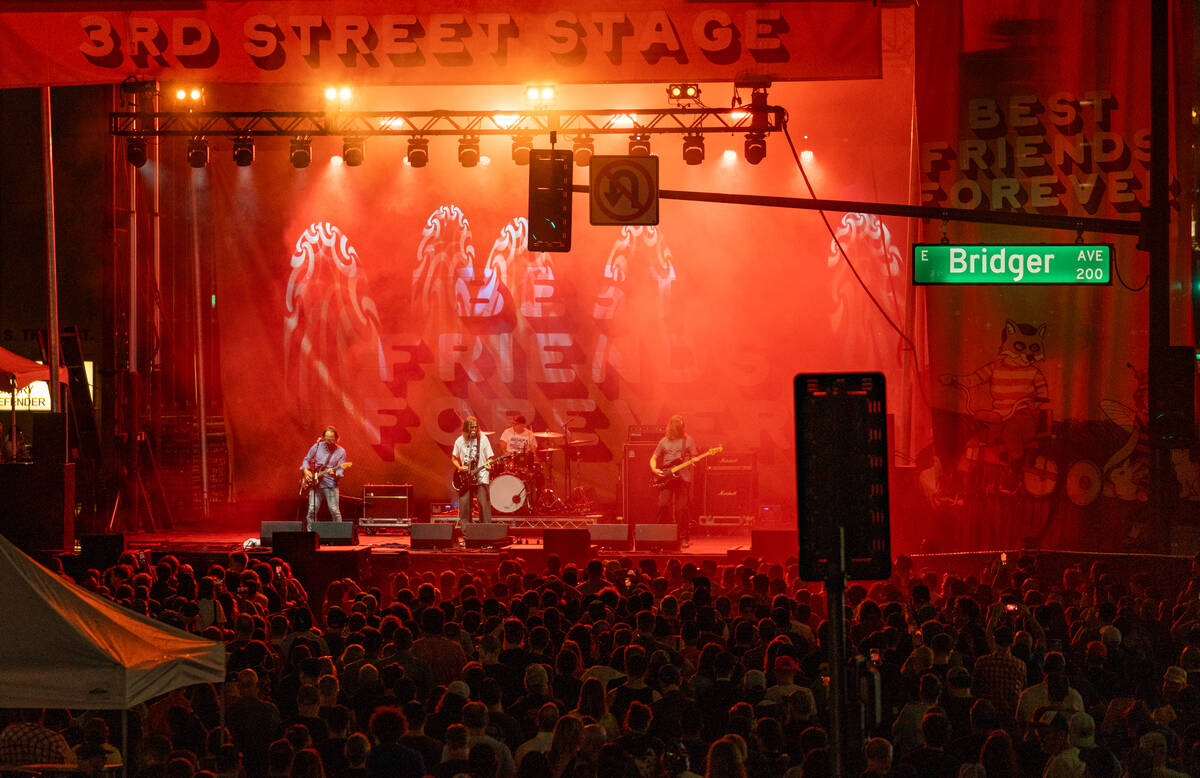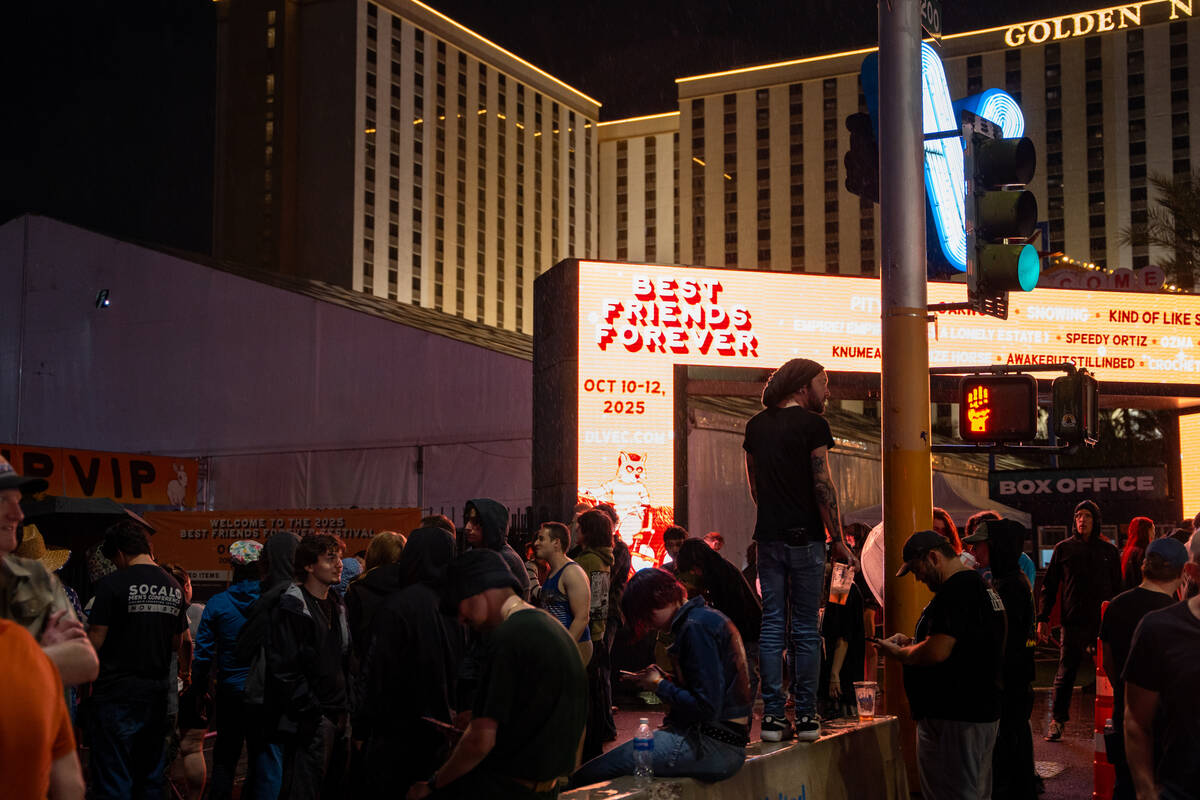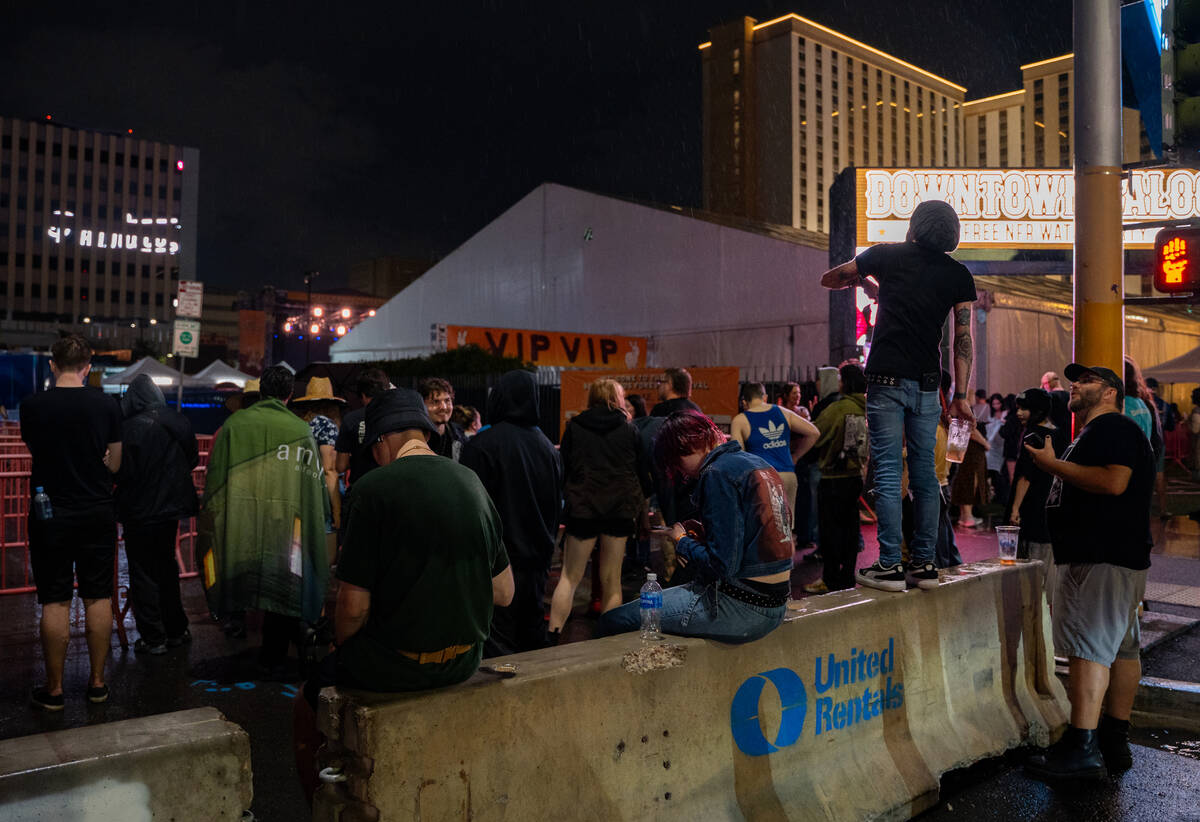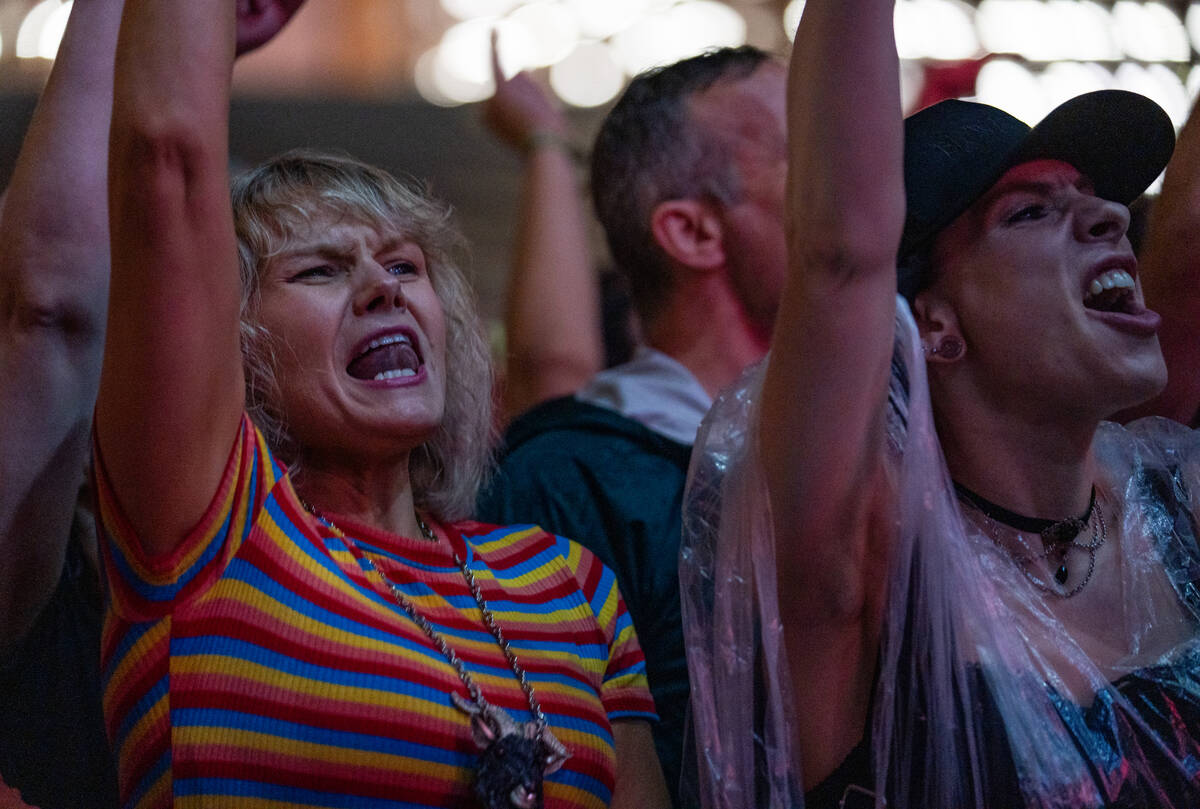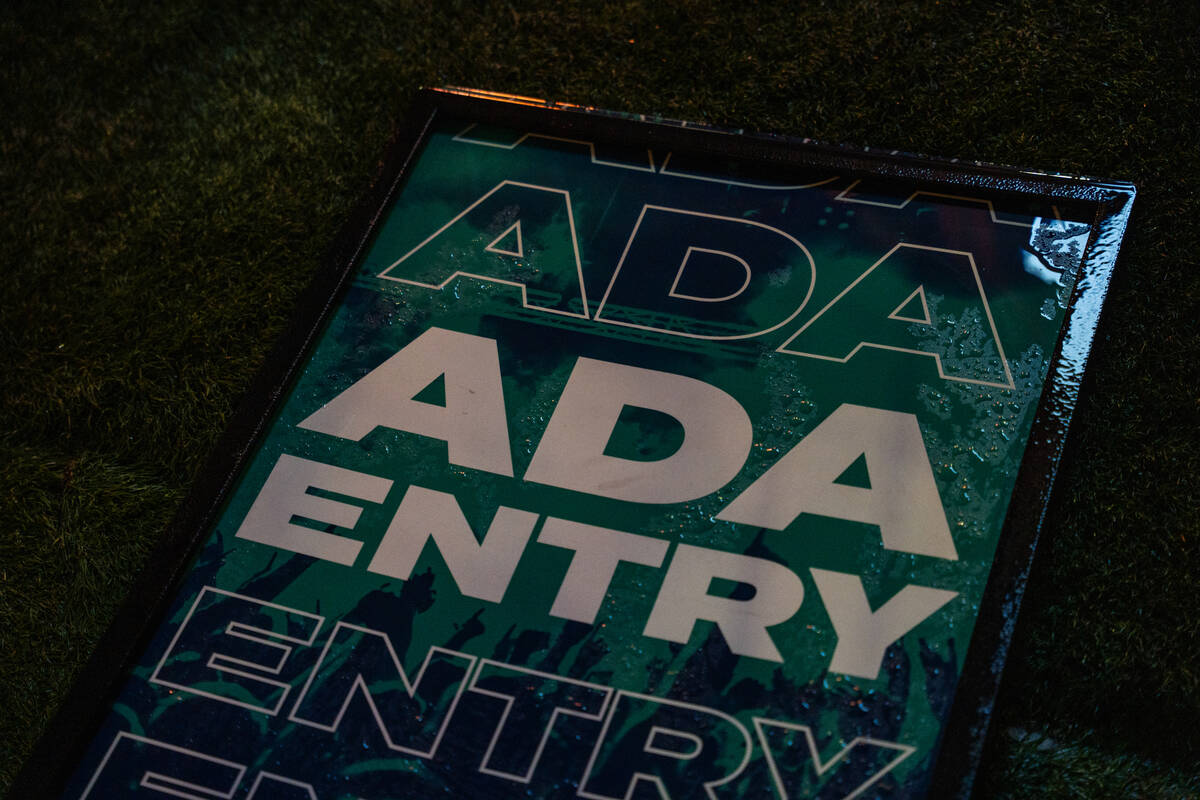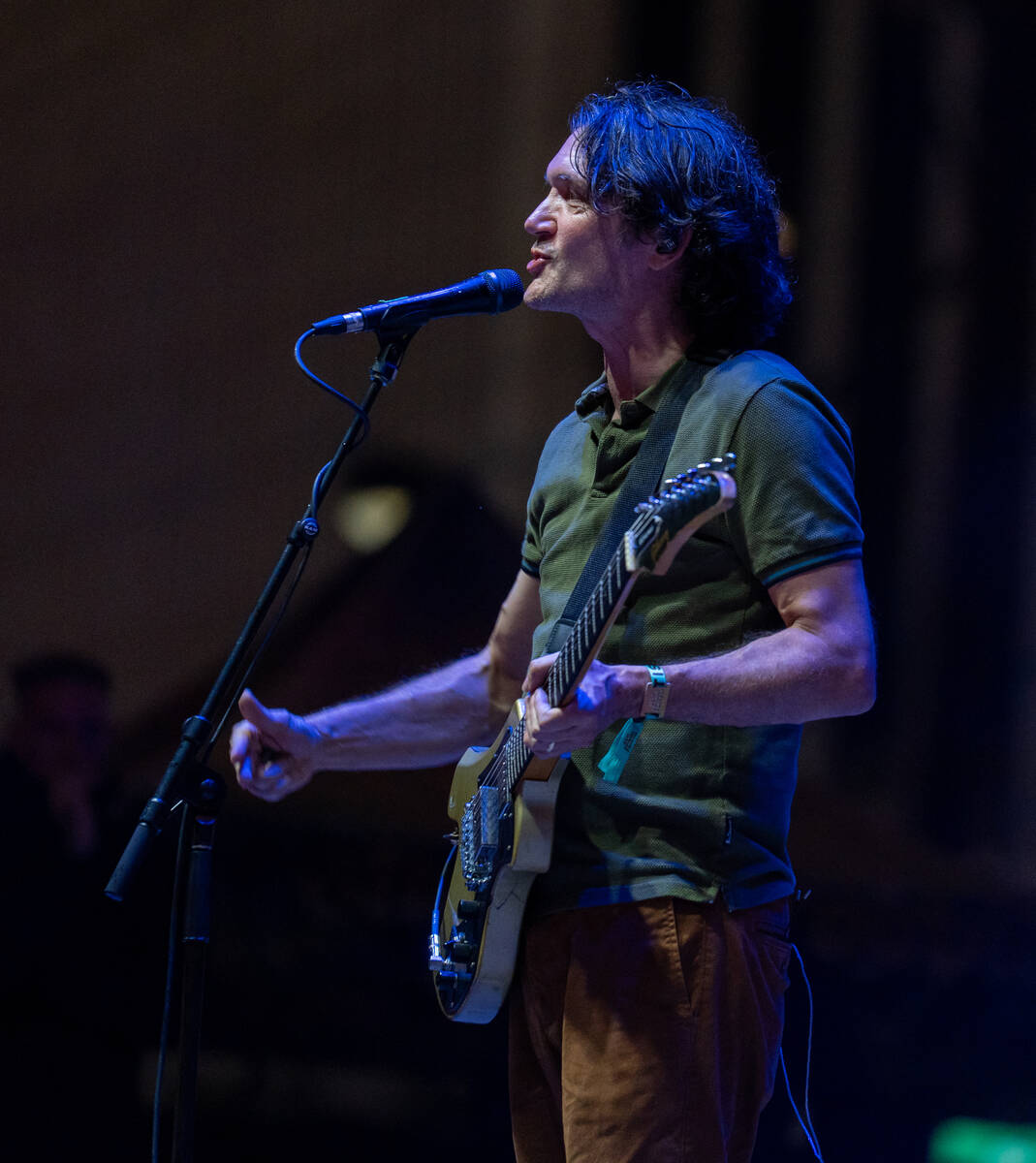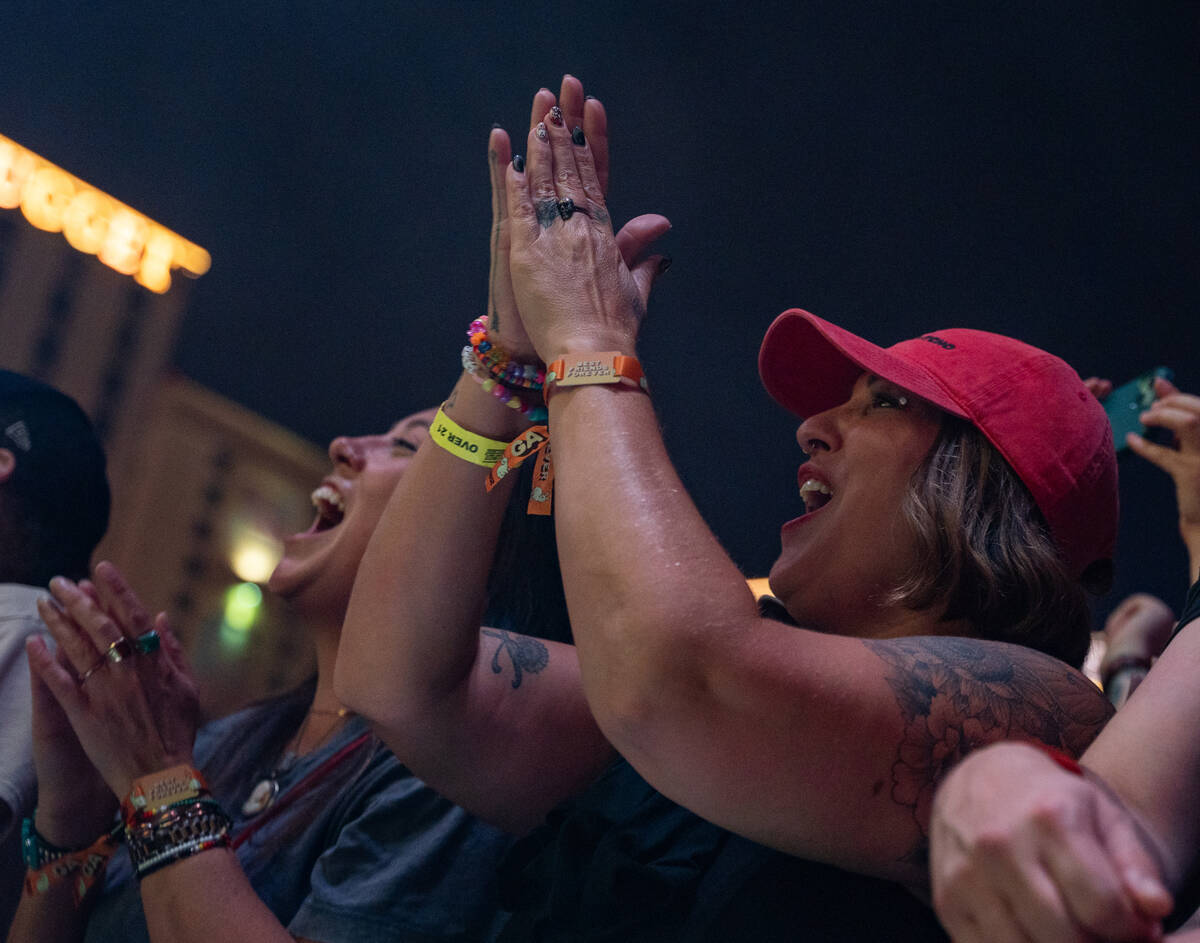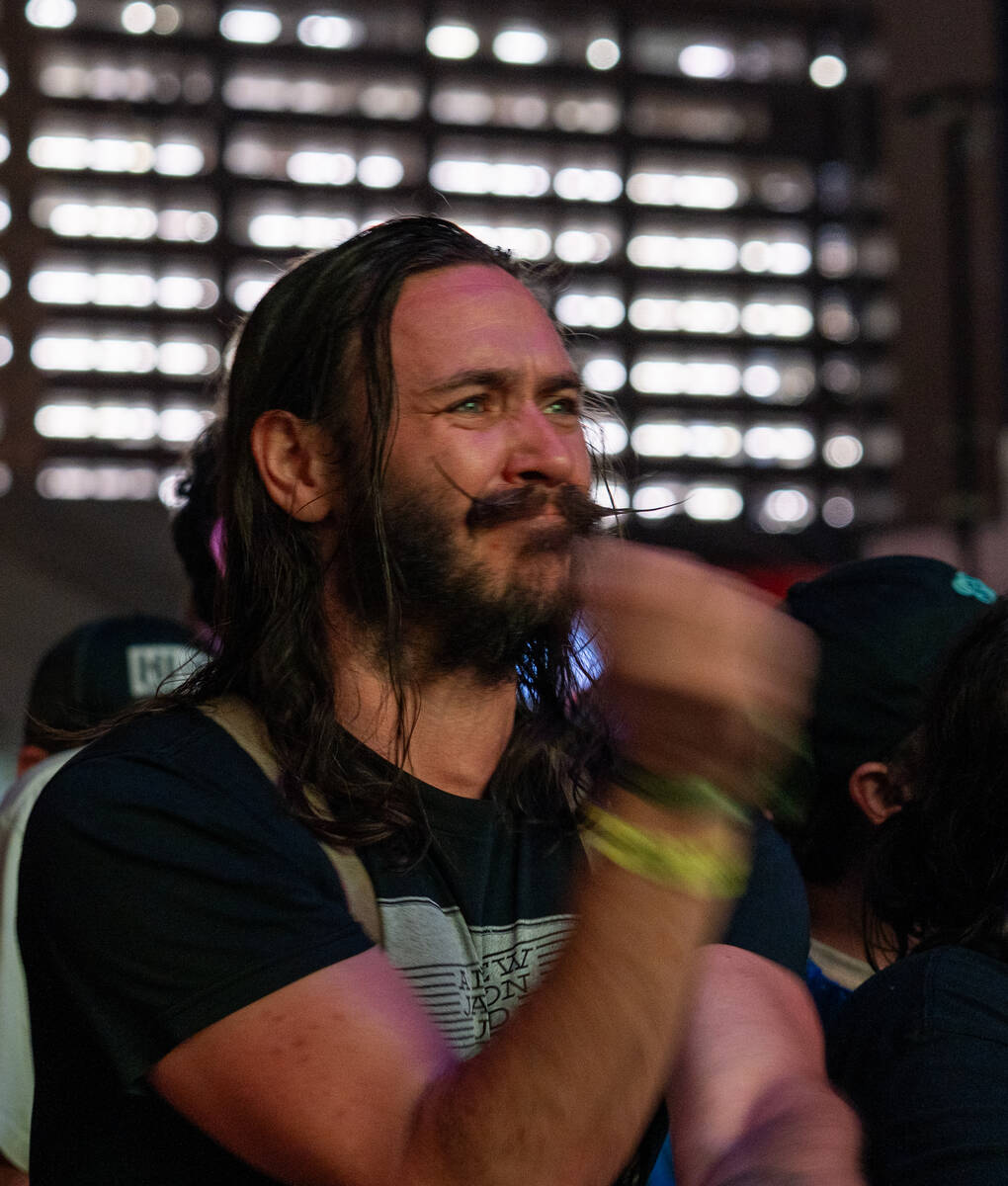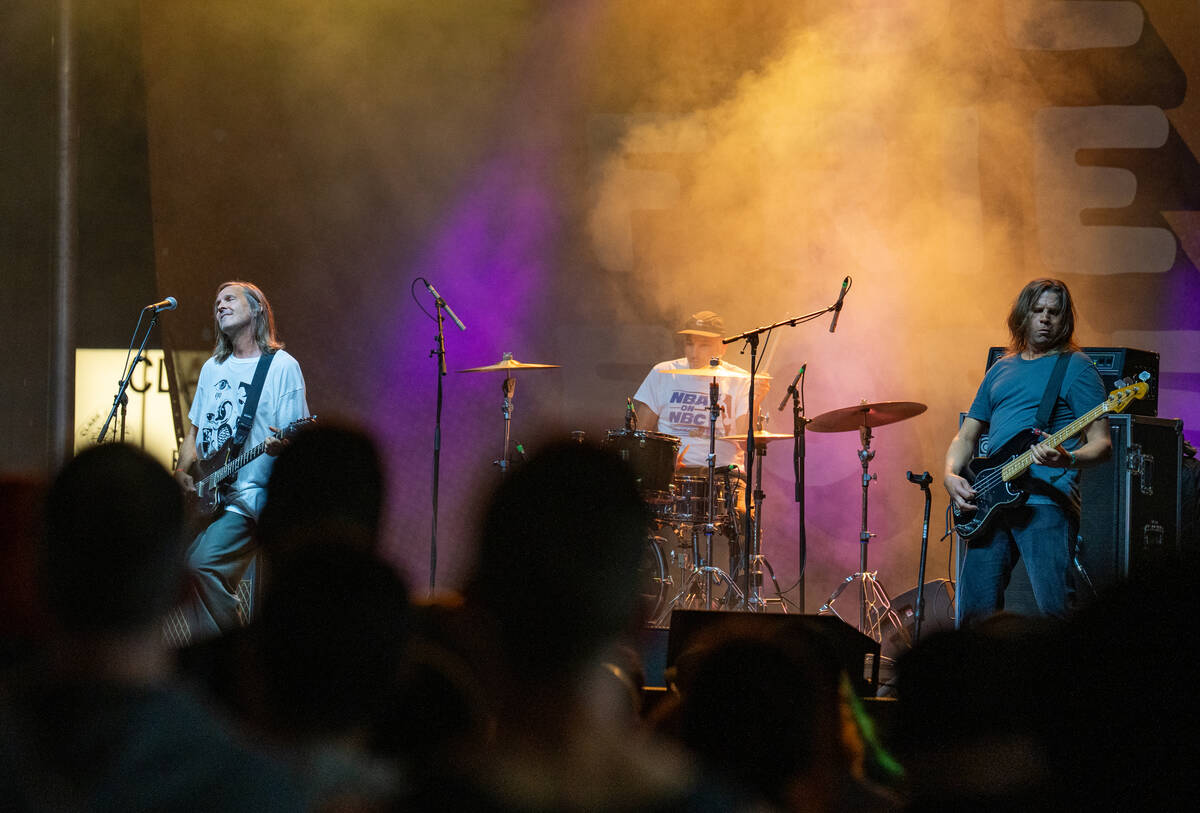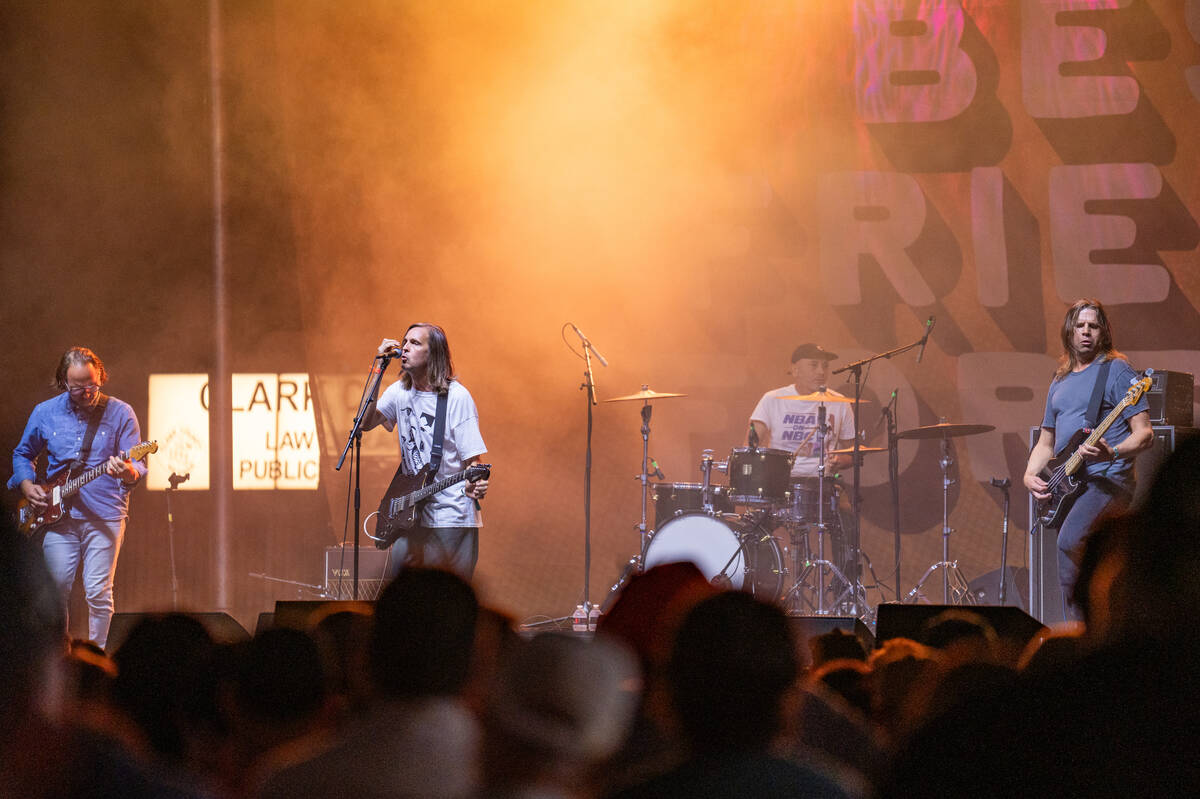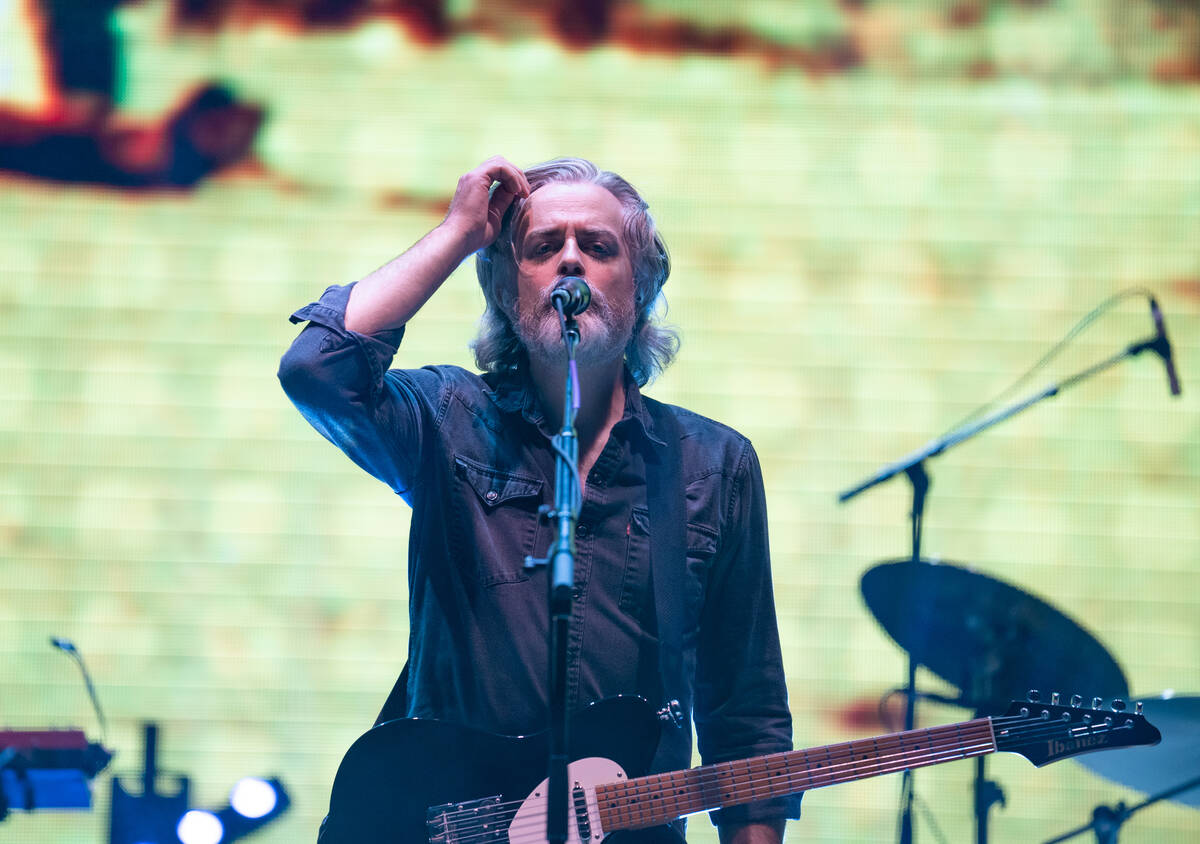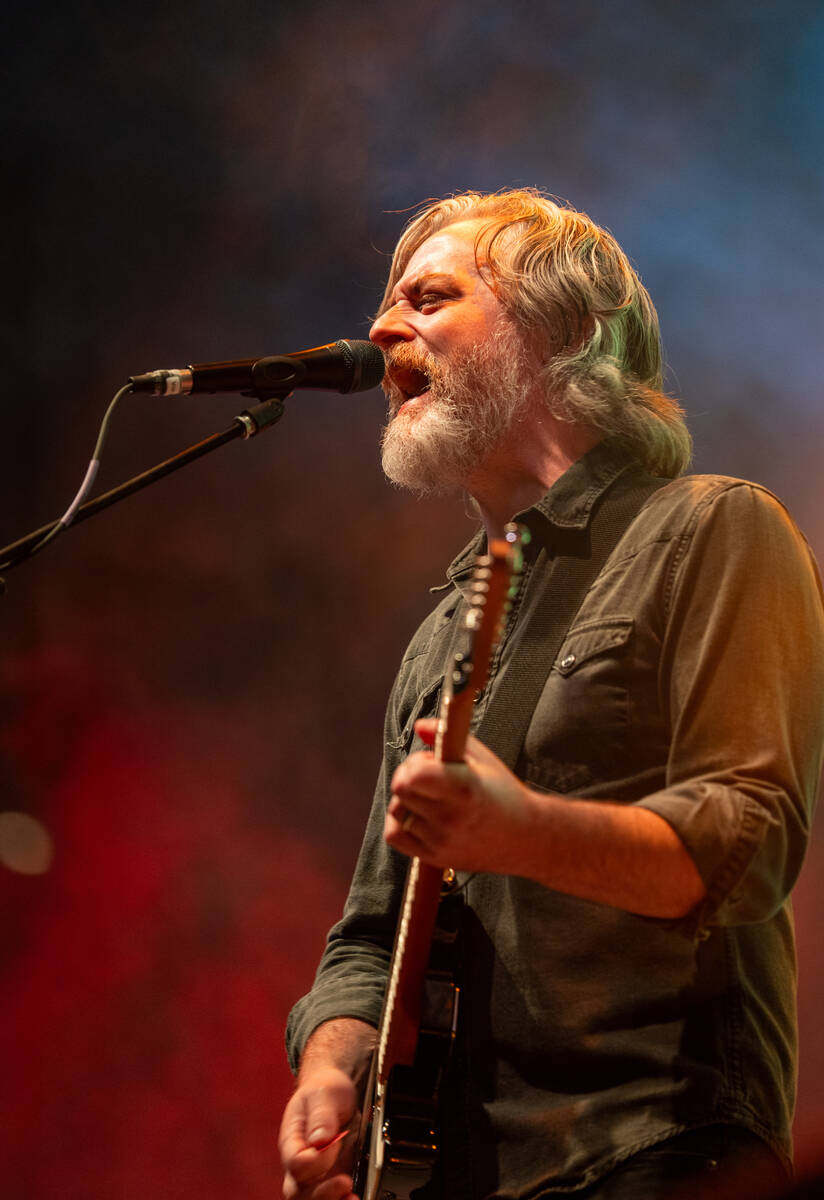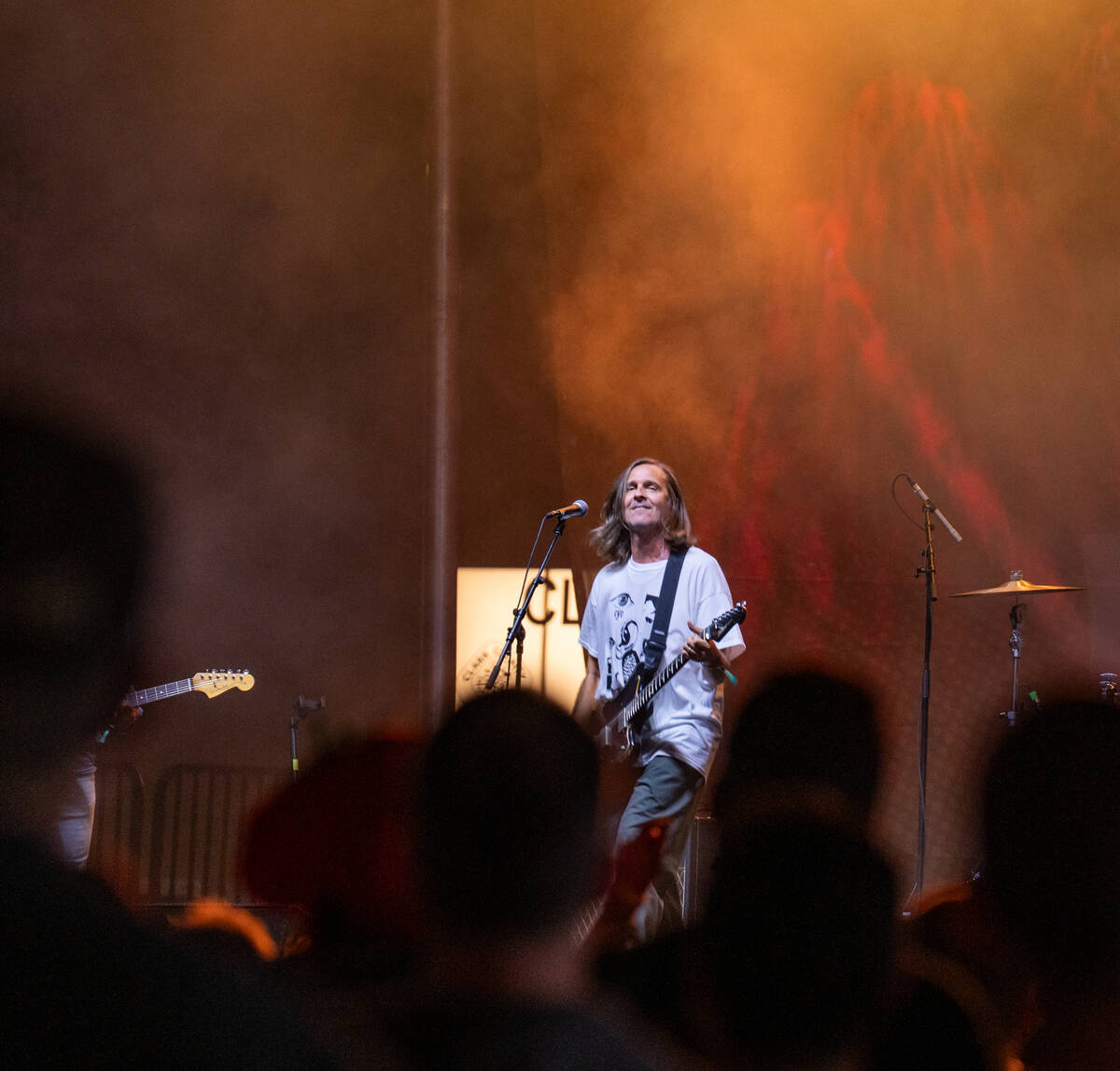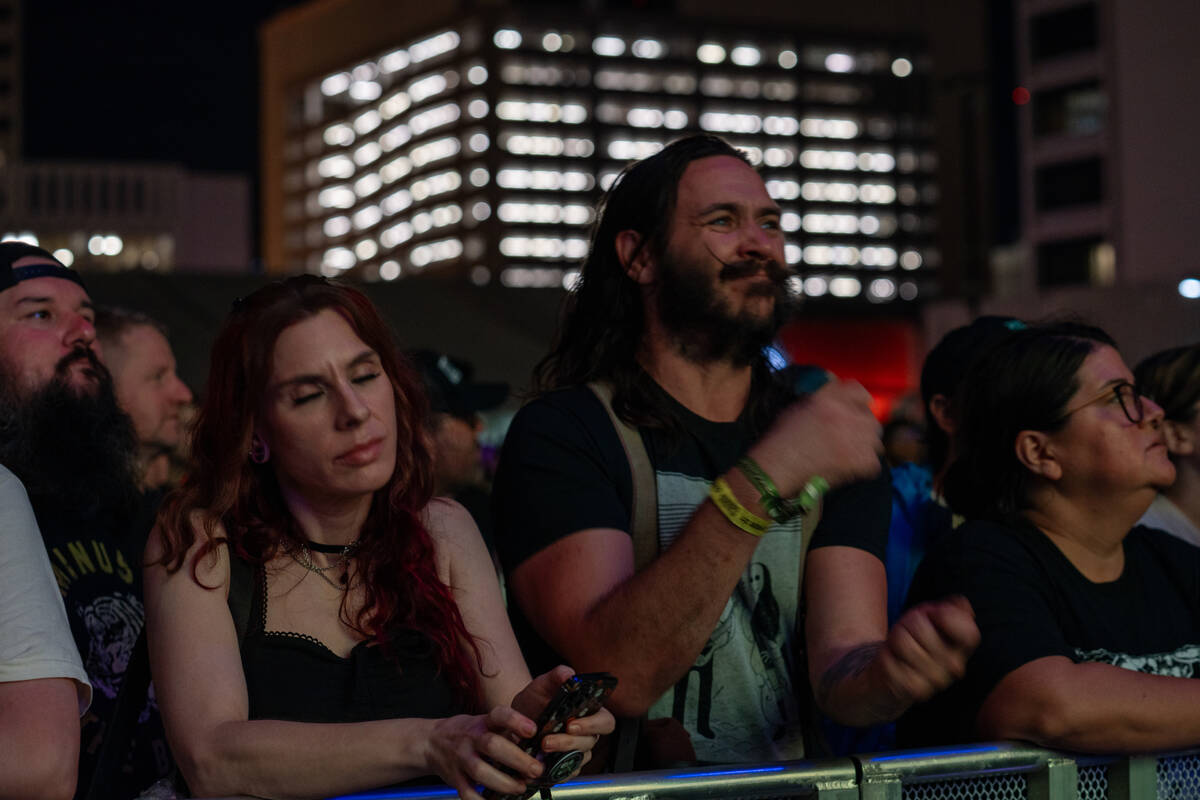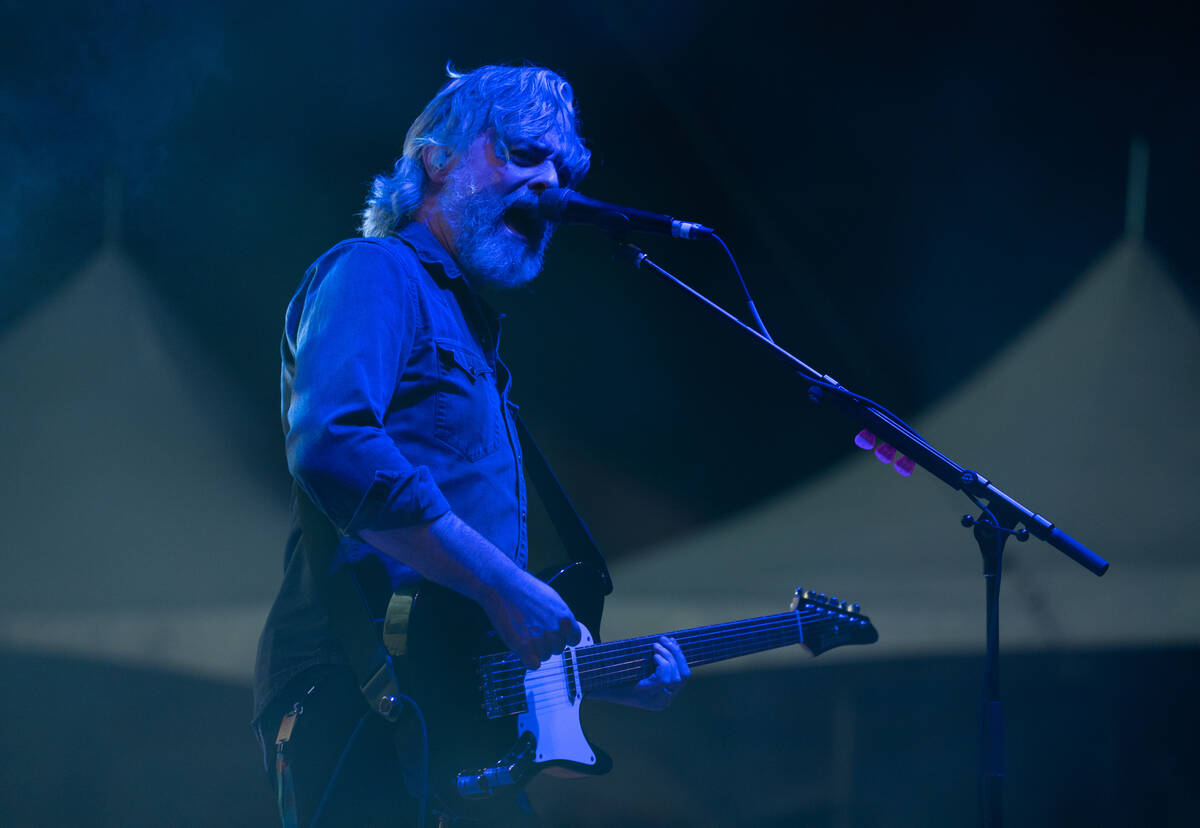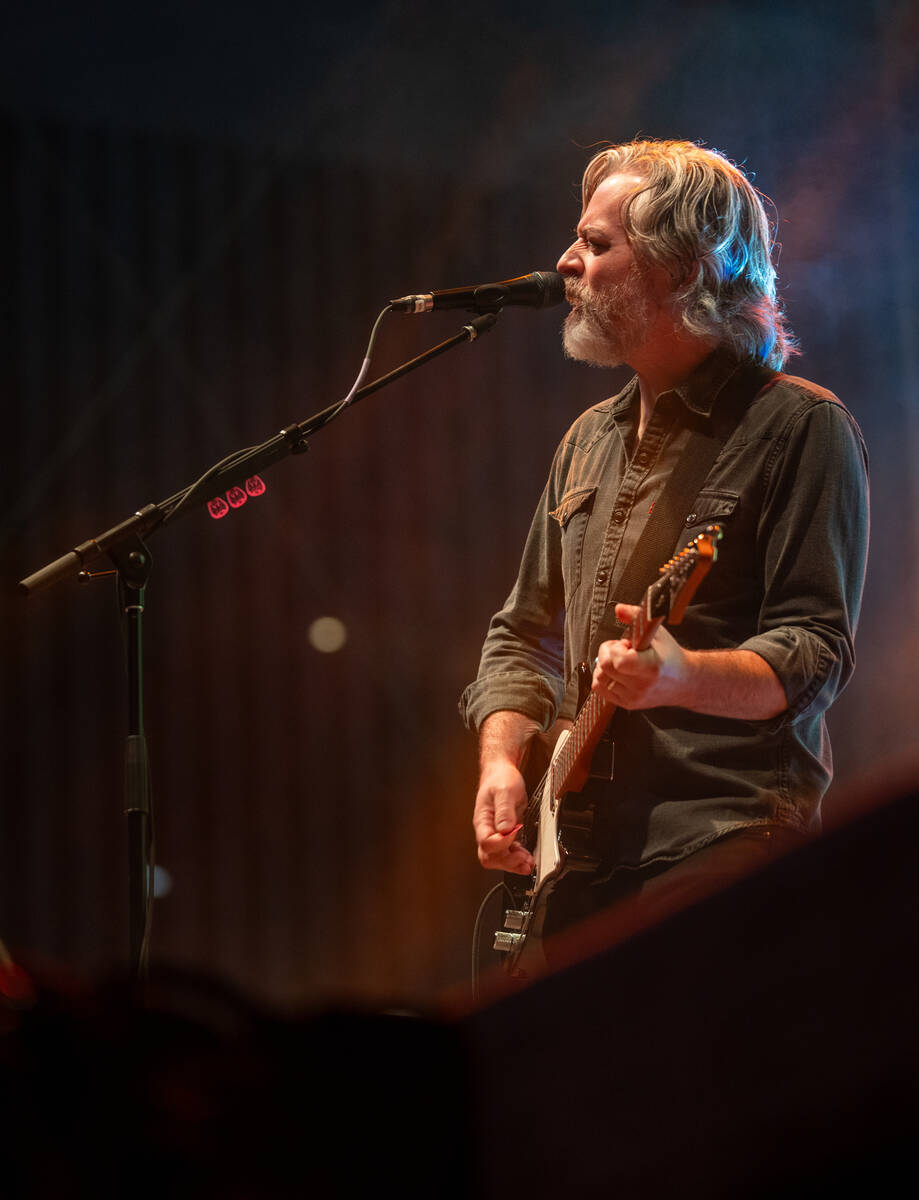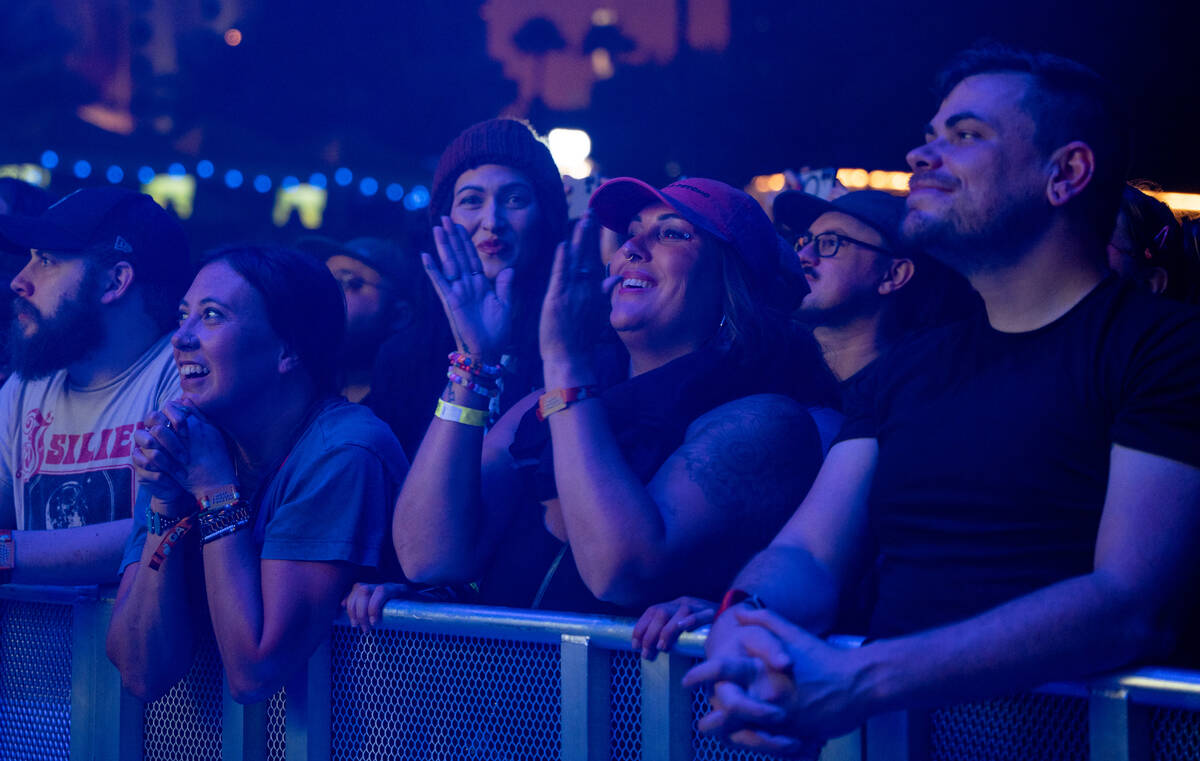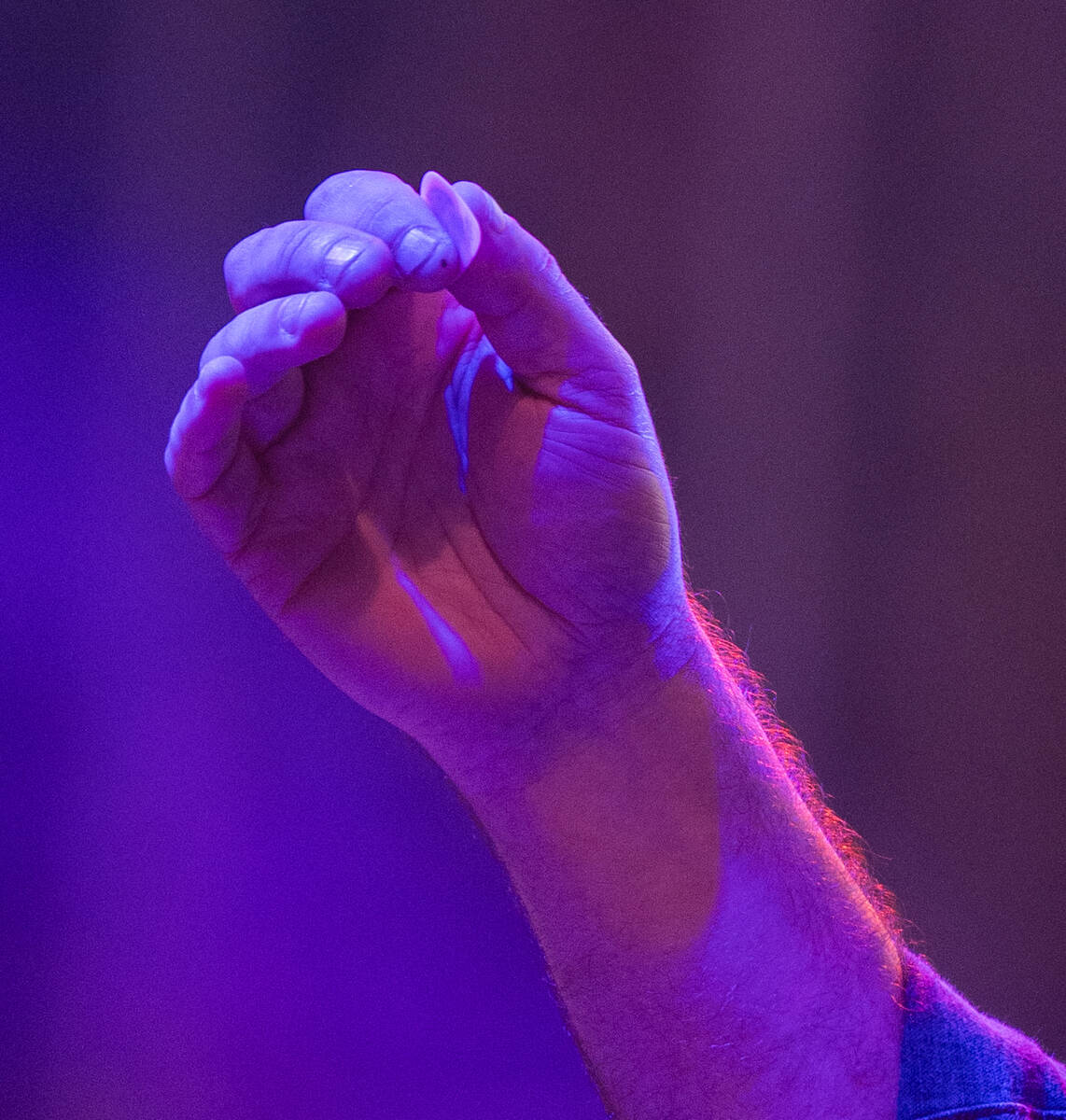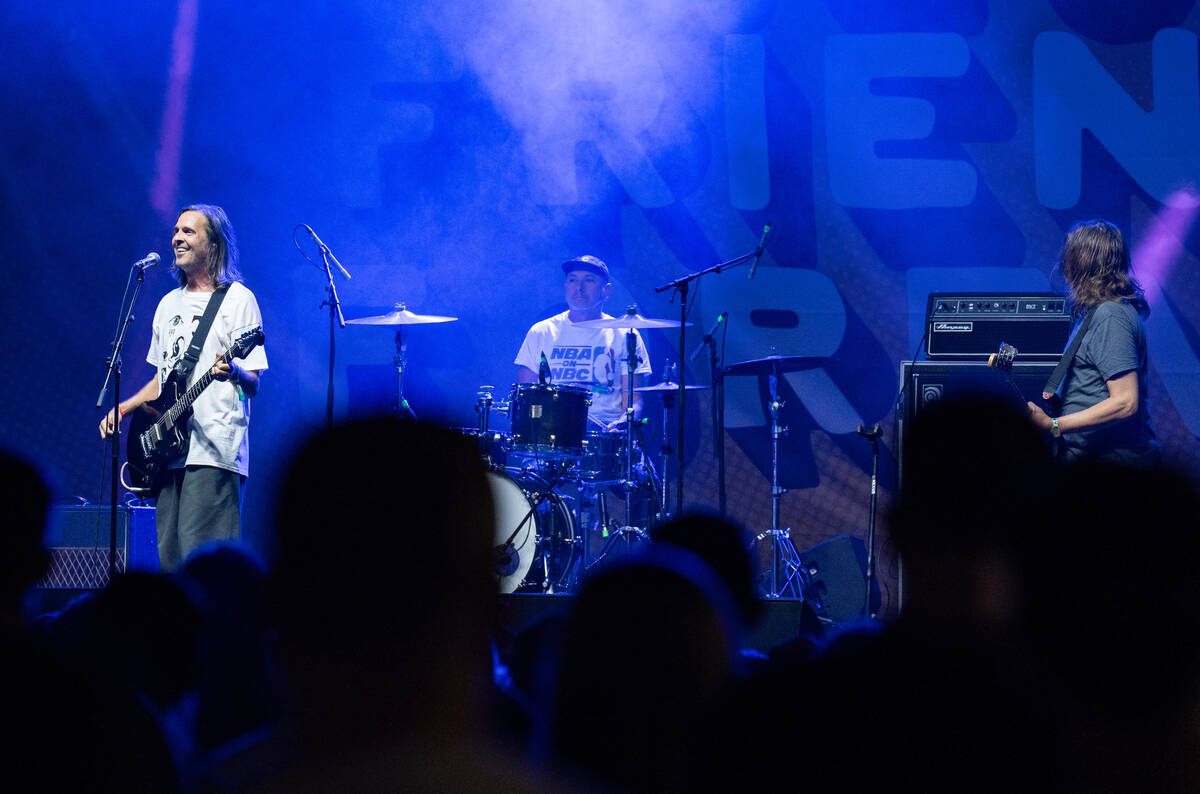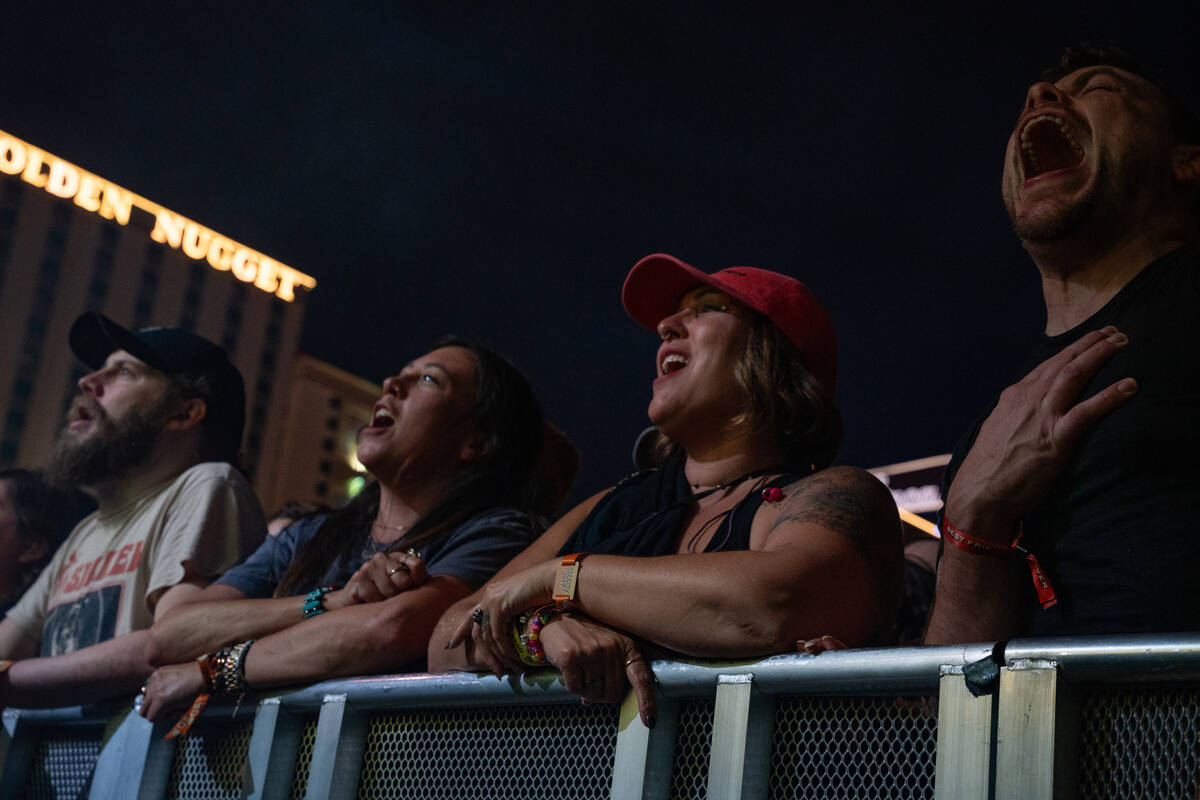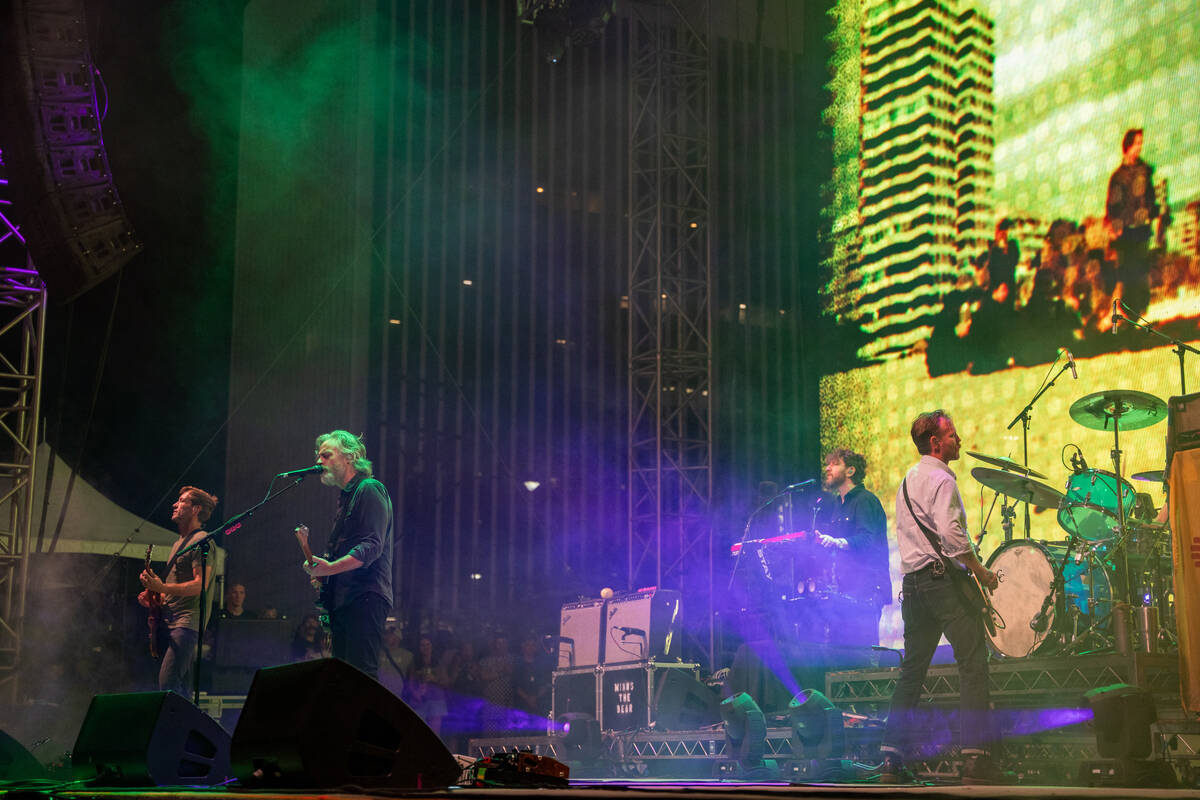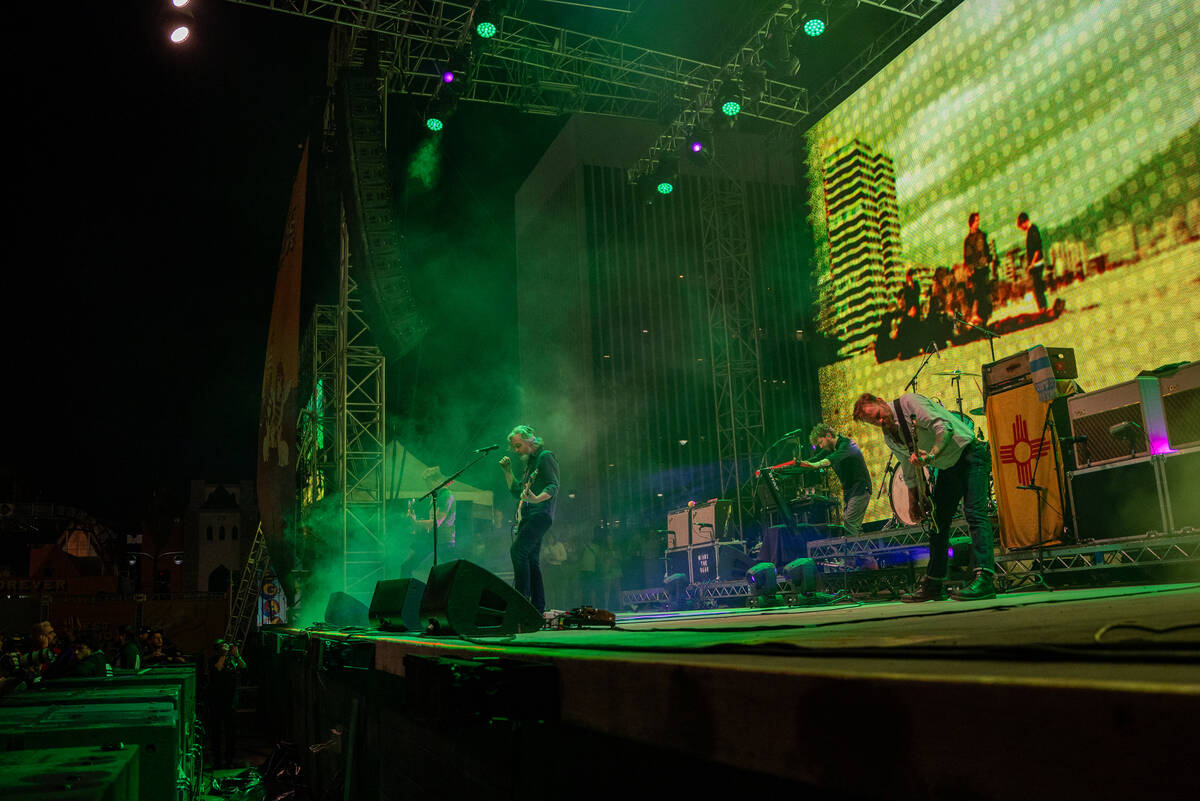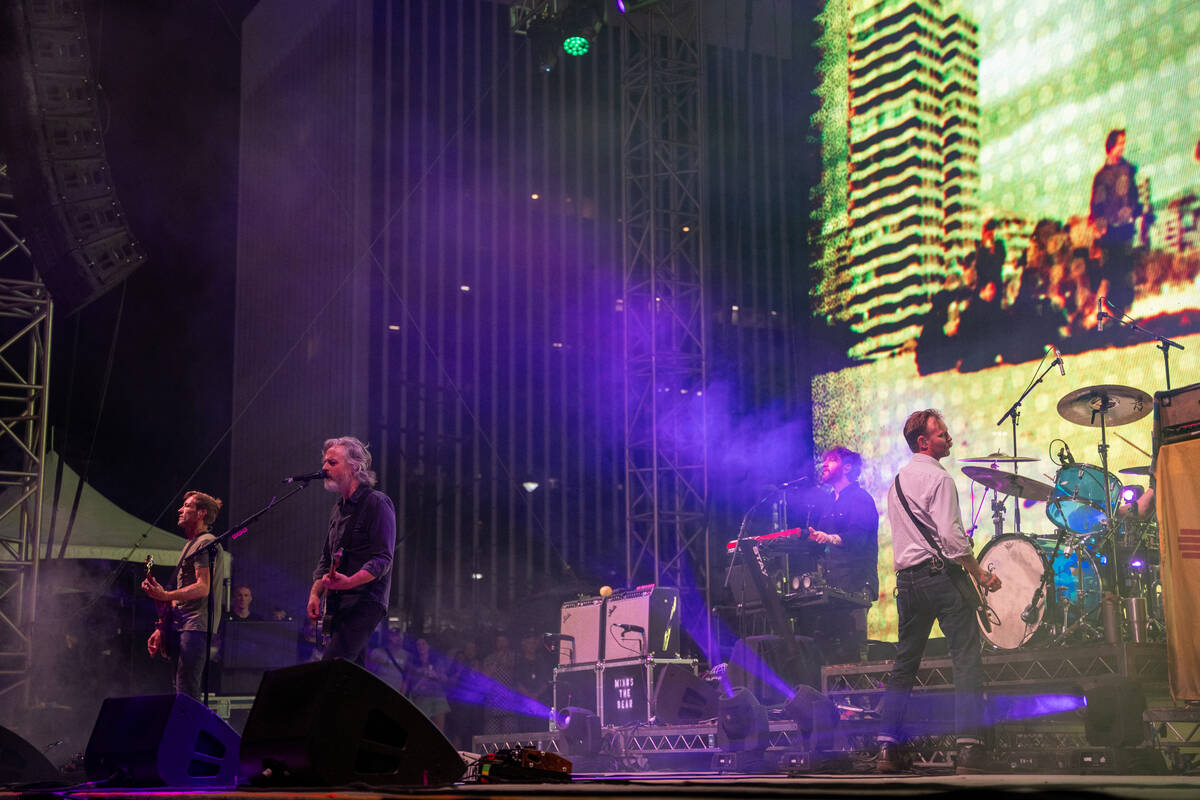Thunder, lightning and emo: Best Friends Forever Fest makes stirring, soggy return
His words were as thick with irony as the sky was with thunderclouds.
“All that screaming’s a bit much, don’t you think?” asked Knapsack frontman Blair Schehan with a knowing wink after howling through the song “Shape of the Fear” so hard, it was as if he was trying to expel his lungs through his throat.
It was a trick question, of course: There was no such thing as too much shouted-out lyrical catharsis during the return of the Best Friends Forever emo and indie rock festival on Friday at the Downtown Las Vegas Events Center, where the weather was almost as overcast as the music.
The three-day fest got off to a fitful start when storm showers postponed the show for about an hour-and-a-half early in the evening, leaving much of the crowd to seek refuge in the booze-and-merch tent in the back of the venue or in the jam-packed VIP area.
Leave it to Rivals Schools singer, guitarist, and smile-emoji-incarnate Walter Schreifels to find a silver lining to all the sogginess.
“Anyone get caught out there in the rain today?” he asked during his band’s irrepressibly energetic set of guitars-for-days post-punk. “It’s good sense memory.”
Despite all the wet socks and rain-watered down beers in the house, when indie rockers Cursive took the main stage at 7:20 p.m., ending the delay, it registered as a telling moment of resiliency from a community of bands and fans defined by that very thing: this scene is extremely well-practiced when it comes to hanging in there.
One of the things that many of the acts here have in common — even more than any sonic parallels — is that they tend to possess modestly-sized, but intensely dedicated fanbases that have stuck with them through prolonged periods of inactivity or decades-plus gaps between albums, in numerous cases.
A bevy of bands playing the fest this weekend toiled in relative obscurity early in their careers, only to see their influence — and followings — snowball over the years, pulling a number of them out of retirement to perform in front of crowds far larger than they ever did during their initial runs.
Take Knapsack, for instance
The California emo quartet formed in ‘93 and disbanded in 2000 after releasing three albums. But during their dormancy, those albums took on new life, beloved by successive generations of emo fans for their fusion of raw emotion and refined song-craft.
Twenty-five years after first calling it a day, here they were performing on the Third Street Stage in front of a throng of thousands.
“If some emo Nostradamus told me 25 years ago that we’d still be playing now,” Schehan mused between songs, “I’d be like, ‘That’s highly unlikely, sir.’”
Similarly, Austin, Texas’ Mineral got started in 1994, dropping a pair of albums before breaking up four years later only to see those records subsequently become highly-influential emo touchstones — particularly their seminal 1996 debut “The Power of Failing.”
On Friday, Mineral earned a rapturous response on the main stage, their songs making heartache feel almost exultant as they swelled into grand crescendos of sound, with guitars, voices, emotions — everything — cranked up to 10.
“Thanks for being here for this whole crazy run for us. It really means a lot,” bassist Jeremy Gomez said towards the end of the band’s set, which doubled as the end of the band itself: this was Mineral’s final show.
Watching the group engage the crowd in one intensely impassioned sing-along after the next begged the question: why did this band and many of their peers go so overlooked back in the day?
Timing had a lot to do with it
Consider how emo compared to the more popular variants of rock music that dominated the ’90s: its confessional lyrics were way too earnest for the irony-obsessed grunge boom; its often intricately-arranged songs too progressive for the punk explosion and its pervasive sense of vulnerability was absolutely anathema to the testosterone-powered nü metal hordes.
What changed?
In the early aughts, emotive indie rock acts like Thursday and Thrice began bubbling up from the underground, creeping towards the fringes of the mainstream, calling attention to their emo influences of the previous decade and exposing them to a whole new generation of fans.
A revival was born
One of the bands that generated this fresh momentum for the scene in the early 2000s was Seattle prog-emo quintet Minus The Bear, who headlined the main stage, reuniting after a seven-year hiatus to perform their 2005 sophomore album “Menos el Oso” in its entirety along with other tunes.
Beach balls bounced in the air among the crowd surfers as they played, and fittingly so: the band’s electronically-enhanced sound pulses with a near-danceable buoyancy thanks to deft guitar interplay, prominent bass lines and borderline-disco beats, capping the night with an arms-in-the-air atmosphere of jubilance, of endurance.
“Look at us, braving a literal storm,” frontman Jake Snider beamed at one point, gazing out at the crowd.
Of course, he was alluding to the fits of thunder and lighting that interrupted the evening, but he could just as well have been speaking of the all music industry whims and whipsaws that this entire scene has endured — and outlasted.
“And here we are,” he concluded. “Right now.”
Contact Jason Bracelin at jbracelin@reviewjournal.com or 702-383-0476. Follow @jasonbracelin76 on Instagram.

